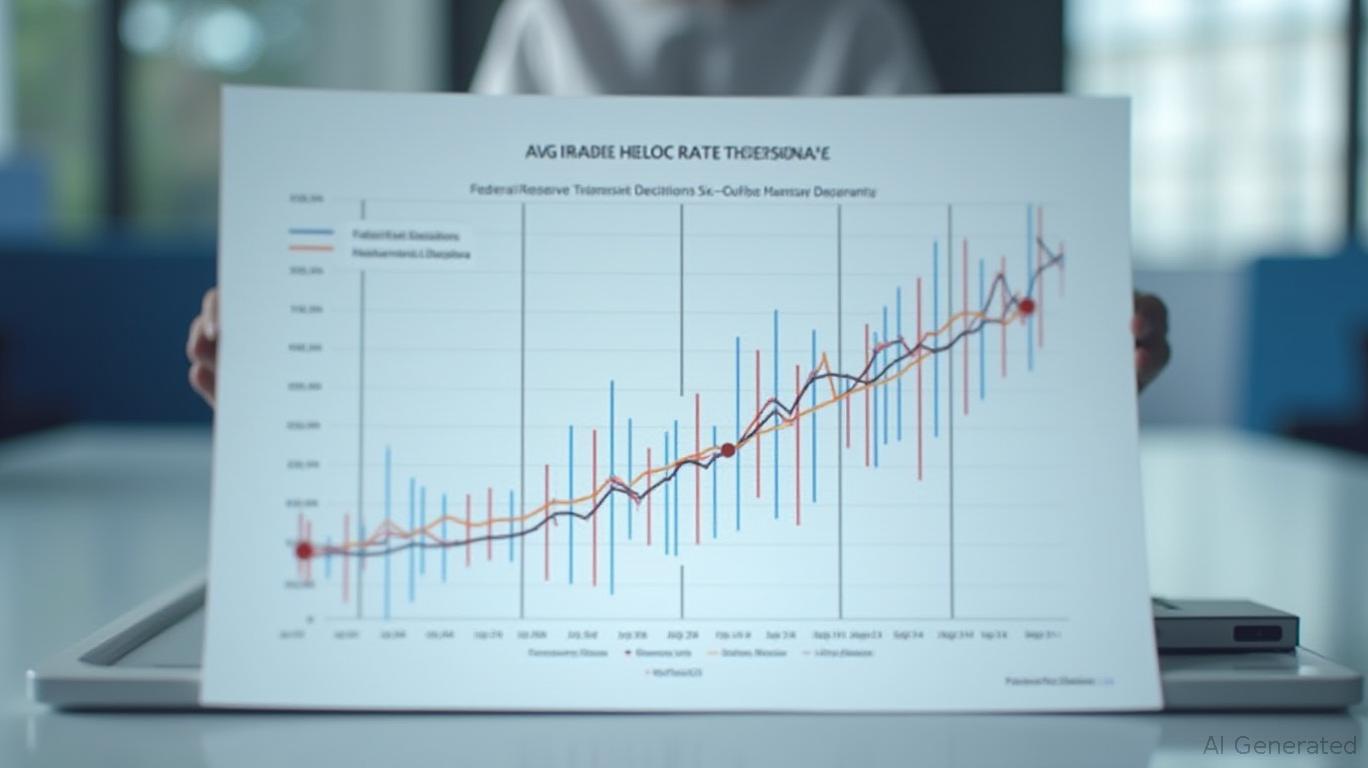Locking In Low HELOC Rates: A Strategic Move Amid Stable Fed Policy
The Federal Reserve's decision to maintain its target federal funds rate between 4.25% and 4.5% since December 2024 has created a unique opportunity for homeowners to secure favorable borrowing terms. Amid stable policy and lingering uncertainty about future rate hikes, homeowners with strong credit and high equity can capitalize on historically low introductory home equity line of credit (HELOC) rates to fund strategic investments or consolidate debt. While alternatives like personal loans or cash-out refinances remain costly or risky, HELOCs offer a flexible, cost-effective path—if borrowers carefully weigh the risks of variable-rate exposure.

The Case for HELOCs: Cost Efficiency Amid Stability
HELOC rates currently average 6.75%, with introductory rates as low as 6.49% for top-tier borrowers, according to recent lender data. This compares favorably to personal loans, which average 12.36%, and even to cash-out refinances, whose rates hover between 6.75% and 7.5% (see table below). The Fed's reluctance to cut rates further—despite political pressures—means borrowers can lock in these terms before potential tightening.
Key Advantages of HELOCs:
1. Lower Costs: HELOC rates are roughly half those of unsecured personal loans, making them ideal for large expenses like home renovations or debt consolidation.
2. Flexibility: Borrowers can draw funds incrementally, paying interest only on what they use.
3. Preservation of Existing Mortgages: Unlike cash-out refinances, HELOCs do not require replacing an existing low-rate primary mortgage, avoiding costly closing fees and resetting the loan term.
Cash-Out Refinances: A Costlier Alternative
While cash-out refinances offer lump-sum access to equity, their drawbacks are significant. Rates are comparable to HELOCs, but borrowers face 2-6% in closing costs and must surrender their current mortgage's favorable terms. For instance, a 30-year fixed-rate refinance now averages 6.86%, but borrowers with a 5% mortgage might find refinancing to a 6.86% rate counterproductive.
Risks and Prudent Borrowing
The Fed's “wait-and-see” approach to future rate cuts introduces uncertainty. HELOC rates are variable, tied to the prime rate, which stood at 7.50% as of June 2025. Introductory periods (typically 12 months) offer stability, but after that, rates could rise alongside inflation or geopolitical risks. Borrowers must:
- Avoid long-term debt for non-essential expenses: A HELOC's variable nature makes it risky for discretionary spending.
- Prioritize equity-building uses: Use funds for home improvements that increase property value or reduce long-term costs (e.g., energy-efficient upgrades).
- Assess worst-case scenarios: Calculate payments at a prime rate of 9-10%, ensuring affordability even if rates climb.
Strategic Moves for 2025
- Lock in introductory terms now: Borrowers with 20%+ equity and a 720+ FICO score qualify for the lowest rates.
- Compare lenders aggressively: Rates vary widely—up to 18% for those with weaker credit—so shop multiple institutions.
- Pair with a fixed-rate loan: Use a HELOC for flexible needs and a fixed-rate loan for large, one-time expenses to hedge against rate volatility.
Final Considerations
The Fed's stability offers a rare window to borrow cheaply, but borrowers must remain disciplined. HELOCs are not “free money”—their variable rates demand careful planning. For those with strong financial footing, however, they represent a powerful tool to leverage home equity without overextending. As the old adage goes: borrow when you don't need it, and you'll be prepared when you do.
Investment Takeaway:
Homeowners with high equity and strong credit should prioritize securing a HELOC now to lock in sub-7% rates, but only for uses that enhance long-term value. Avoid overleveraging, and consider pairing this flexibility with fixed-rate products to mitigate risk.

Comments
No comments yet